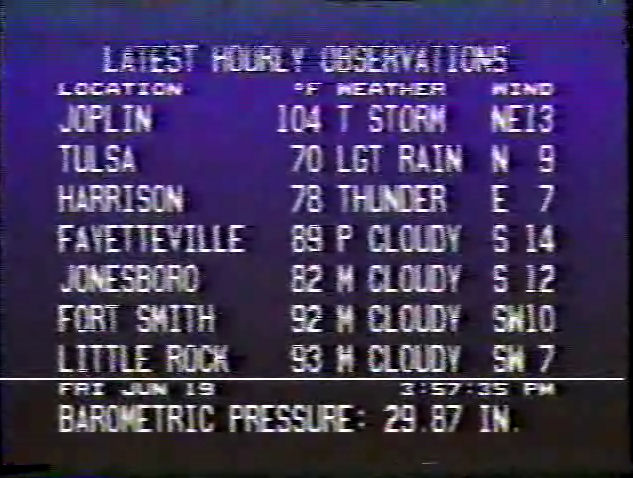“Today we learned about protons and electrons!” my oldest son told me a couple of days ago when I picked him up from school. It brought me up short just a little bit.
Not because I thought it was something he shouldn’t be learning about – it’s absolutely something he should learn about – but I was thinking back to how old I was when I learned about protons and electrons in school. One thing I do know is that I wasn’t in the first grade.
And that’s kind of the magical thing about where my son goes to school.
Backing up a bit: while he was still in pre-school, he was flagged as possibly having developmental issues. After screenings, tests, and a lot of wringing of hands, gnashing of teeth, and maybe a bit of pushing and shouting about whether the state agency tasked with paying for testing and therapy would, in fact, pay for testing and therapy, it was discovered that it was very likely that he had Asperger Syndrome (which has since been folded into the less specific – and thus less helpful – “autism spectrum disorder” in the DSM).
As Little E approached school age and we had to start looking further ahead than preschool, there were many options and few options at the same time. I wasn’t crazy about the notion of a church-run private school, because I want the kid educated, not indoctrinated. And public school was another problematic option. The Alma public schools, once renowned for having specialized staff to deal with autistic and other non-neurotypical students, had begun cutting precisely those people from the payroll in a series of cutbacks. Great timing.
It was at about this time that a friend recommended that I look into the Montessori School of Fort Smith. There was a bit of a steep learning curve because we didn’t really know how a Montessori school operates and how its students learn, but once we got the plot – that there was method to what would seem like madness compared to the rigidly-run classroom of a public school, and that this method actually allowed students to explore subjects of interest more thoroughly without doing so to the exclusion of other core subjects. If anything, the teachers found ways to link it all together. Practical skills were being taught that public schools frequently don’t make time for. The diversity of students’ ethnic backgrounds, skills, and interests was almost dizzying. They were all unfailingly polite and respectful. I distinctly remember some of the older students walking us through their presentation about the history and culture of New Zealand. I know a thing or two about that subject myself; I’d become fascinated with the place in my 20s, and had undertaken my own study of Maori culture and language, not a topic on which it’s easy to find material in America, on my own time. These kids had a decent, accurate working knowledge of everything except the language in sixth grade.
By the time we concluded that first visit, both of us were convinced: this was the place.
It wasn’t easy getting in; there was a waiting list, and we didn’t have the economic advantage of being able to afford a private school. (The same problem would’ve reared its head in any of the private school scenarios under consideration, to be sure.) We applied for financial aid – not something we anticipated having to do before college – and barely squeaked in. I had been laid off from my long-running TV job recently, so even the discounted tuition represented a challenge.
It’s been worth every penny and then some. Little E truly came out of his shell with a Montessori education. I had already worked hard – very hard – as a stay-at-home dad to get his reading and math skills to an acceptable level, if not more than acceptable. (I can take a little bit of pride in the knowledge that he tested well ahead of his grade/age level when he started kindergarten at Montessori.) His teachers have taken that ball and run with it. In kindergarten, he’d clamber into the car in the afternoon and tell me that he’d mastered the trinomial cube.
I’m pretty sure I was in high school before I ever heard the word “trinomial” in my entire life. Kindergarten. Wow.
Today is Arkansas Gives, an opportunity for residents of the state to give to charities of their choice. The Montessori School of Fort Smith has received a matching grant meaning that donations made to the school will be matched by the Arkansas Community Foundation. The event lasts from 8am to 8pm.
I’m taking the bold step of asking friends and family, near and far, in Arkansas or not, to pitch in. Anyone who’s enjoyed my site, my blog, my books, my video productions, my convention appearances, my incessant Facebooking and Twittering, or heck, just my pleasant company and that curious scent of fresh pine that I have a habit of not emitting, everyone’s welcome to pitch in directly. I could ask for donations to our family to help cover Little E’s tuition, but the Montessori School of Fort Smith is accepting donations for a general scholarship fund. I want to help my kid and other kids who would benefit from a Montessori education. There’s a bigger picture here. You could help a whole generation worth of young minds to explore their full potential and learn to be better students going into the upper grade levels and college.
If I have one regret about this school, it’s that I didn’t go there myself. One thing that emerged from all of the testing that Little E underwent was that he’s the non-neurotypical son of a non-neurotypical adult; I’m probably deeper down the “autism spectrum” than he is. In my childhood, the mechanisms to detect this an intervene simply weren’t there, and I went through public school being the Weird Kid. (Who am I kidding, I still am the Weird Kid.) Little E never has to worry about that. I wonder how different my life could have been with an education like his.
Please help me make sure that future generations of kids in this area have the chance to find their place here as well – trinomial cubes, protons and electrons and all.


+ There are no comments
Add yours